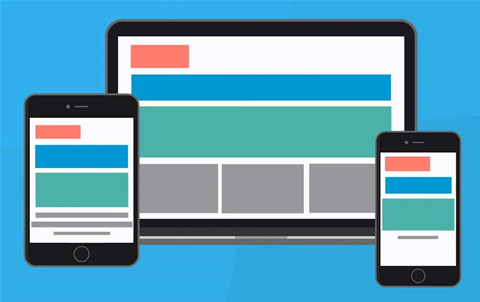Top-Tier Website to App Conversion

Website to app conversion has become a hot topic in the digital realm. It involves transforming a website into a fully functional mobile application, providing users with a seamless and optimized mobile experience. This process not only enhances user engagement and satisfaction but also opens up new avenues for businesses to reach a wider audience.
Understanding the value of website to app conversion is essential for businesses looking to stay ahead of the competition. In this blog post, we will delve into the various aspects of this conversion process, providing insights and guidance on making informed decisions.
Choosing the right platform for your app is crucial to ensure its success. We will explore the differences between the iOS and Android platforms, considering factors such as user demographics, market share, and development requirements. Understanding your target audience and their preferences will help you make an informed decision on which platform to choose.
Once the platform is determined, we will discuss the steps involved in website to app conversion. From planning and analysis to designing the user interface, development and integration, and testing and deployment, each step plays a crucial role in the successful conversion process.
To assist you in this journey, we will also highlight some of the top tools available for website to app conversion. We will compare their features and pricing, empowering you to choose the right tool that aligns with your business goals and budget.
However, website to app conversion is not a one-time process. It requires continuous maintenance and updates to ensure the app remains functional and relevant. We will discuss the importance of routine checking and bug fixing, adding new features and functionalities, and monitoring user feedback and ratings to keep your app up to date and user-friendly.
Join us on this blog post as we explore the world of top-tier website to app conversion. Gain valuable insights and practical tips to transform your website into a powerful mobile application that captivates users and propels your business towards success.
Understanding the Value of Website to App Conversion
In today’s digital landscape, where mobile usage is on the rise, businesses are recognizing the immense value of website to app conversion. Converting a website into a mobile application offers numerous benefits that can significantly impact the success and growth of a business. Let’s delve into the key advantages of website to app conversion:
Enhanced User Experience and Engagement
Mobile apps provide a more personalized and immersive experience for users. By converting your website into an app, you can optimize the user interface, streamline navigation, and tailor the content to suit the mobile platform. This translates into improved user engagement, increased time spent on the app, and higher chances of conversions.
Access to Offline Functionality
Unlike websites that require an internet connection, mobile apps can offer offline functionality, allowing users to access certain features and content even without an internet connection. This offline capability enhances user convenience and ensures that your app remains accessible and functional in various situations, such as poor network connectivity or limited data availability.
Leveraging Device Features
Mobile devices come equipped with a range of features such as cameras, GPS, push notifications, and sensors. By converting your website into an app, you can tap into these device features and provide users with enhanced functionalities. For example, a retail app can utilize the camera for barcode scanning, GPS for location-based offers, and push notifications to deliver personalized updates and promotions.
Improved Performance and Speed
Mobile apps are designed to offer optimized performance and faster loading times compared to websites. This is achieved through various techniques such as caching, data compression, and minimizing server requests. By providing a seamless and swift user experience, you can reduce bounce rates and improve user satisfaction, leading to increased conversions and customer loyalty.
Increased Brand Visibility and Recognition
Having your own mobile app increases your brand’s visibility and strengthens your presence in the digital marketplace. By being present on users’ mobile screens, your app serves as a constant reminder of your brand, fostering brand recognition and recall. This increased visibility can lead to higher user engagement, increased brand loyalty, and ultimately, improved business growth.
Access to App Store Distribution Channels
Converting your website into an app opens up opportunities to distribute your app through popular app stores such as the Apple App Store and Google Play Store. These platforms provide a vast user base and offer mechanisms for app discovery, promotion, and monetization. By leveraging app store distribution channels, you can extend your reach and attract a larger audience to your business.
Data Collection and Analytics
Mobile apps offer extensive capabilities for data collection and analytics. By converting your website into an app, you can gather valuable user insights, such as user behavior, preferences, and demographics. This data can be utilized to fine-tune your app, improve user experiences, and make data-driven decisions to enhance your business strategies.
Understanding the value of website to app conversion is crucial for businesses aiming to stay relevant in the mobile-first era. By leveraging the advantages mentioned above, you can create a powerful and engaging mobile app that drives user satisfaction, boosts brand visibility, and accelerates business growth.
Choosing the Right Platform for Your App
When it comes to website to app conversion, choosing the right platform is a critical decision that can greatly impact the success and reach of your app. The two major platforms to consider are iOS and Android, each with its own advantages and considerations. Let’s explore the factors that will help you make an informed decision:
Comparing iOS and Android Platforms
User Demographics: Understanding your target audience is essential in determining the platform to choose. iOS devices are known to have a higher adoption rate among affluent users and in developed countries, while Android devices dominate in terms of global market share and have a wider user base.
Development Requirements: iOS and Android platforms have different development requirements. iOS apps are developed using languages like Swift or Objective-C and require a Mac computer for development, while Android apps are developed using Java or Kotlin and can be developed on Windows, Mac, or Linux machines. Consider your development team’s expertise and the resources available to you.
Market Share: Android holds a significant market share globally, especially in emerging markets. If your target audience is predominantly in regions where Android devices dominate, it may be wise to prioritize Android development. However, iOS still commands a strong presence in certain markets and has a reputation for higher user engagement and app monetization.
App Store Policies: Apple’s App Store and Google Play Store have different policies and guidelines for app submission and approval. Familiarize yourself with the requirements and restrictions of each platform to ensure your app complies with their guidelines.
Monetization Opportunities: Consider the monetization options available on each platform. iOS users are generally more willing to spend on apps and in-app purchases, making it an attractive platform for generating revenue. Android, on the other hand, has a larger user base and offers opportunities for monetization through advertising and in-app purchases.
Understanding the Target Audience
User Preferences: Analyze your target audience’s preferences and behaviors. Consider factors such as device usage patterns, app category preferences, and user expectations. This will help you align your app with the platform that best suits your target audience’s needs.
Geographic Considerations: If your target audience is specific to a particular region or country, research the dominant platform in that area. This will ensure that your app reaches the majority of your target users.
Choosing Based on the Website Features and Functionalities
Compatibility: Evaluate your website’s features and functionalities to determine which platform can best support them. Consider any specific requirements or technologies used in your website that may be better suited for one platform over the other.
Integration Possibilities: If your website relies on third-party services or APIs, ensure that those integrations are available and well-supported on the platform you choose. This will help maintain the functionality and user experience of your app.
By carefully considering these factors, you will be able to make an informed decision on which platform to choose for your app. Remember that it is also possible to develop for both platforms simultaneously, allowing you to reach a broader audience. The platform you choose should align with your business goals, target audience, and technical considerations to maximize the success of your app.
Steps Involved in Website to App Conversion
Converting a website into a mobile app involves a series of steps to ensure a smooth and successful transition. By following these steps, you can effectively transform your website into a fully functional and engaging mobile application. Let’s explore the key steps involved in website to app conversion:
1. Planning and Analysis
Identify Goals: Define the objectives and goals of your app conversion. Determine what you aim to achieve with your mobile app and how it aligns with your overall business strategy.
User Research: Conduct thorough user research to understand your target audience’s needs, preferences, and expectations. This will help you design an app that caters to their requirements.
Define Features and Functionality: Identify the key features and functionalities that need to be included in your app. Consider the essential elements of your website and determine how they can be adapted to the mobile platform.
Set a Timeline and Budget: Establish a realistic timeline and budget for the app conversion process. This will help you manage resources effectively and ensure timely delivery.
2. Designing the User Interface
Wireframing and Prototyping: Create wireframes and prototypes to visualize the app’s layout, navigation flow, and user interface. Test and iterate on these designs to ensure optimal usability and user experience.
Responsive Design: Adapt your website’s design to fit various screen sizes and resolutions. Ensure that the app’s interface is intuitive, visually appealing, and consistent with your brand identity.
Navigation and Information Architecture: Streamline the navigation structure of your app to ensure easy access to content and features. Organize information in a logical and user-friendly manner.
Incorporate Mobile-specific Elements: Utilize mobile-specific elements such as gestures, animations, and touch interactions to enhance the user experience and engagement.
3. Development and Integration
Choose a Development Approach: Decide whether to develop your app natively (using platform-specific languages and tools) or opt for cross-platform development frameworks like React Native or Flutter. Consider factors such as development time, cost, and performance.
Backend Development: Develop the necessary backend infrastructure to support your app’s functionality. Integrate with APIs, databases, and other systems as required.
Implement Features and Functionality: Translate your website’s features and functionalities into the mobile app. Ensure smooth transitions, responsive interactions, and seamless data synchronization.
Testing and Quality Assurance: Conduct thorough testing to identify and fix any bugs or issues. Test the app on different devices, operating systems, and network conditions to ensure compatibility and performance.
4. Testing and Deployment
Beta Testing: Conduct beta testing with a select group of users or through public beta testing platforms. Gather feedback, identify any remaining issues, and make necessary refinements.
Submission to App Stores: Prepare and submit your app to the respective app stores (Apple App Store and Google Play Store). Follow the guidelines and requirements for app submission, including providing necessary assets, descriptions, and screenshots.
App Store Approval: Await approval from the app stores. Address any feedback or issues raised by the review process and make the necessary adjustments.
5. Maintenance and Updates
Routine Checking and Bug Fixing: Regularly monitor and maintain your app to ensure it remains functional and bug-free. Address any reported issues promptly and release bug fixes as necessary.
Adding New Features and Functionalities: Continuously enhance your app by adding new features and functionalities based on user feedback, market trends, and business requirements.
Monitoring User Feedback and Ratings: Pay attention to user feedback and reviews. Analyze user data and ratings to gain insights into user satisfaction and identify areas for improvement.
By following these steps, you can successfully convert your website into a powerful, user-friendly mobile app. Ensure proper planning, design, development, testing, and maintenance to create an app that delights users and drives business growth.
Top Tools for Website to App Conversion
When it comes to website to app conversion, there are a variety of tools available to simplify the process and streamline the development of your mobile application. These tools offer a range of features and functionalities to assist you in transforming your website into a fully functional mobile app. Let’s explore some of the top tools for website to app conversion:
1. Appgyver
Features: Appgyver provides a comprehensive suite of tools for app development, including a visual drag-and-drop interface builder, pre-built templates, and a vast library of UI components. It supports both iOS and Android platforms and offers features like push notifications, user authentication, and data integration.
Pricing: Appgyver offers a free plan with limited features. Paid plans start at $24 per month.
2. AppPresser
Features: AppPresser is a WordPress-based tool that allows you to convert your website into a mobile app. It offers seamless integration with WordPress and supports various plugins and themes. AppPresser provides features such as push notifications, offline capabilities, and native device integrations.
Pricing: AppPresser offers different pricing plans, starting at $19 per month for a basic plan.
3. React Native
Features: React Native is an open-source framework developed by Facebook. It allows you to build cross-platform mobile apps using JavaScript and offers a rich set of UI components. React Native provides a fast and efficient development environment, enabling you to create high-performance apps with native-like user experiences.
Pricing: React Native is free to use and has a large community of developers for support.
4. PhoneGap
Features: PhoneGap is a popular framework that enables you to build mobile apps using web technologies like HTML, CSS, and JavaScript. It allows you to create hybrid apps that can run on multiple platforms, including iOS, Android, and Windows. PhoneGap offers a range of plugins for incorporating native device features into your app.
Pricing: PhoneGap is an open-source framework and is free to use.
5. Xamarin
Features: Xamarin is a cross-platform development framework that allows you to build native apps using C# and .NET. It offers a single codebase that can be shared across multiple platforms, including iOS, Android, and Windows. Xamarin provides access to native APIs and offers a robust development environment.
Pricing: Xamarin offers a free community edition. For additional features and support, paid plans start at $25 per month.
6. Flutter
Features: Flutter is a UI toolkit developed by Google for building natively compiled applications for mobile, web, and desktop platforms. It uses the Dart programming language and offers a rich set of customizable widgets, fast rendering, and hot reload for rapid development. Flutter allows you to create visually appealing and responsive apps with a single codebase.
Pricing: Flutter is an open-source framework and is free to use.
When selecting a tool for website to app conversion, consider factors such as ease of use, platform compatibility, available features, and pricing. Evaluate your specific requirements and choose a tool that best suits your project’s needs. These top tools can significantly simplify the process of converting your website into a mobile app, enabling you to deliver a rich and engaging user experience.
Maintaining and Updating Your App Post Conversion
After successfully converting your website into a mobile app, your journey doesn’t end there. Maintaining and updating your app is crucial to ensure its continued success and user satisfaction. Here are some important steps to consider for maintaining and updating your app post conversion:
1. Routine Checking and Bug Fixing
Regularly monitor your app’s performance and functionality to identify any bugs or issues. Conduct thorough testing on different devices and operating systems to ensure compatibility and smooth operation. Address any reported issues promptly and release bug fixes as necessary to maintain a seamless user experience.
2. Adding New Features and Functionalities
To keep your app relevant and engaging, consider adding new features and functionalities based on user feedback, industry trends, and business goals. Continuously enhancing your app will attract and retain users, providing them with fresh experiences and reasons to keep using your app.
3. Monitoring User Feedback and Ratings
Pay attention to user feedback, ratings, and reviews. Analyze the feedback to gain insights into user satisfaction, identify areas for improvement, and address any user concerns or suggestions. Engage with your users and respond to their feedback to foster a positive relationship and enhance user loyalty.
4. Performance Optimization
Regularly optimize your app’s performance to ensure fast loading times, smooth navigation, and efficient use of system resources. Monitor app analytics to identify any performance bottlenecks and take necessary steps to optimize speed, responsiveness, and overall user experience.
5. Security and Data Protection
Maintain regular security audits and updates to protect user data and ensure the app’s security. Stay up to date with the latest security practices and address any vulnerabilities promptly. Implement secure authentication methods, data encryption, and secure communication protocols to safeguard user information.
6. Compliance with Platform Updates
Stay informed about platform updates and changes in the guidelines and policies of the app stores. Regularly update your app to comply with the latest requirements and take advantage of new platform features and functionalities. This will ensure that your app remains compatible with the latest platform versions and does not face any issues during the app review process.
7. User Engagement and Retention Strategies
Implement user engagement and retention strategies to keep users actively using your app. This can include personalized notifications, in-app promotions, loyalty programs, and exclusive content. Regularly analyze user behavior and engagement metrics to identify opportunities for improving user retention and increasing app usage.
By following these steps, you can maintain the quality and relevance of your app post conversion, ensuring long-term success and user satisfaction. Remember that app maintenance and updates are ongoing processes, and staying proactive in addressing user needs and market trends will help you stay ahead of the competition and deliver a top-tier mobile app experience.
We hope you found this article interesting. Now, we’d like you to reimagine your website as a sleek, user-friendly mobile app. Here’s your chance to get a glimpse of what could be. Simply enter your website and email address in the form below, and we’ll send you a sample of your very own app.
Think of it as your website’s digital makeover – a transformation into something more accessible, engaging, and mobile. Don’t just dream about the possibilities, enter your details below and one of the team will be in touch.
Want to see your website as an app?
Have a Question?
Tom from Website2App
Website2App will help you scale your business by converting your website into a mobile app ready for the Apple App Store and the Google Play Store.
To see a preview of your own mobile app, fill out the form above.
Have a question? Contact us at our support page and one of the team will respond.



